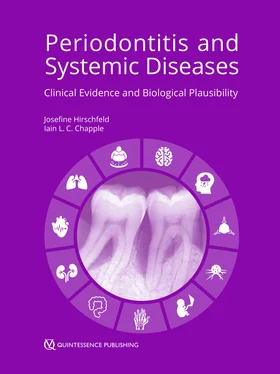In the USA, a 2005 estimation indicated that obese men are thought to incur an additional US $1152 annually per person in medical spending, while obese women incur over double that. The authors estimate that around US $190 billion per year, approximately 21% of US health care expenditure, is due to treating obesity and obesity-related conditions 14. In Europe, a 2008 review of 13 studies in 10 western European countries estimated the obesity-related health care burden had a relatively conservative upper limit of €10.4 billion annually 15 , 16.
1.1.2 Diabetes mellitus
Diabetes was first described in the Ebers Papyrus in 1500 BC, when it was called ‘too great emptying of the urine’. At the time, physicians from India observed that the urine from people with diabetes attracted ants and flies, calling it ‘honey urine’. In 1776, the British physiologist Matthew Dobson first described that the sweet-tasting substance in the urine was sugar. However, it was only in the nineteenth century that glycosuria became an accepted diagnostic criterion for diabetes, after Michel Eugène Chevreul observed in 1815 that the sugar found in urine was glucose and after Hermann Von Fehling developed a quantitative test for glucose in urine in 1848 17. Between 1893 and 1909, several researchers, including Paul Langerhans, observed that insulin deficiency was the factor responsible for the development of diabetes. Prior to its isolation and clinical use in 1922 by Frederick Banting and Charles Best, the only known treatment for diabetes was starvation diets, with not uncommonly death from starvation in some patients with diabetes T2DM 17. Regarding oral hypoglycaemic agents, in 1918, C. K. Watanabe observed that guanidine caused hypoglycaemia 17. Ten years later, biguanidine, a guanidine-modified molecule, was introduced for treatment of diabetes in Europe 17. In 1949, Becton, Dickinson and Company began the production of a standardised insulin syringe designed and approved by the American Diabetes Association (ADA). The standardised syringe reduced dosing errors and the associated episodes of hyperglycaemia and hypoglycaemia.
Diabetes impacts more than 415 million people worldwide and two thirds of people with diabetes die of heart disease and stroke 18. In addition, the risk for cardiovascular disease mortality is two to four times higher in people with diabetes than in people who do not have diabetes 7. Diabetes is a disease that rarely occurs alone. When it is combined with abdominal obesity, high cholesterol and/or high blood pressure, it becomes a cluster of the highest risk factors of heart attack. The combination of these diseases is termed metabolic syndrome (MS), also known as insulin-resistance syndrome or cardiometabolic syndrome. According to the most recent guidelines issued in 2009 by the International Diabetes Federation (IDF), American Heart Association (AHA) and the National Heart, Lung, and Blood Institute (NHLBI), MS is defined as the combination of at least three of the following conditions: increased plasma glucose (≥ 100 mg/dl), hypertension (≥ 130/85 mmHg or systemic arterial hypertension treatment), hypertriglyceridaemia (≥ 150 mg/dl), low high-density level cholesterol (HDL, < 40 mg/dl) and/or elevated abdominal circumference (≥ 94 cm + ethnicity-specific values) 19.
MS is a major public health challenge worldwide since it is associated with a five-fold elevated risk of T2DM and a two- to three-fold risk of cardiovascular disease 20. MS predicts diabetes independently of other factors. However, obesity worsens the diabetes risk associated with MS or impaired glucose tolerance, due to its relation to insulin resistance and due to being the central element of MS 21. Data from the third National Health and Nutrition Examination Survey (NHANES III) in adults aged 50 years or older indicated that the prevalence of coronary heart disease was greatest in individuals with MS and DM combined 22.
Circulating blood glucose binds to, and therefore glycates, the red blood cell protein haemoglobin. This glycation occurs proportionally to the blood glucose concentration. By measuring the percentage of glycated haemoglobin (HbA1c) in the blood, the average blood glucose over the past 2 to 3 months and a person’s success in controlling their blood glucose can be estimated 23.
According to the position statement published by the ADA in 2018 24, it is suggested that the HbA1c should be less than 7% for non-pregnant adults, which is an average glucose concentration of 154 mg/dl or 8.6 mmol/l ( Table 1-2). However, it can be less stringent; for example, in patients with a history of severe hypoglycaemia, long-standing diabetes and limited life expectancy, < 8% is acceptable. The HbA1c test should be conducted at least two times per year in patients who are meeting the treatment goals and who have stable glycaemic control, and quarterly in patients whose therapy has changed or who are not meeting glycaemic goals 24.
Table 1-2 The relationship between haemoglobin A1c (A1C) and estimated average glucose (eAG, calculated by the formula eAG = 28.7 × A1c − 46.7)
| A1C |
eAG |
| % |
mg/dl |
mmol/l |
| 6.0 |
126 |
7.0 |
| 6.5 |
140 |
7.8 |
| 7.0 |
154 |
8.6 |
| 7.5 |
169 |
9.4 |
| 8.0 |
183 |
10.1 |
| 8.5 |
197 |
10.9 |
| 9.0 |
212 |
11.8 |
| 9.5 |
226 |
12.6 |
| 10.0 |
240 |
13.4 |
Diabetes and its complications are a major cause of morbidity and mortality worldwide and contribute substantially to health care costs. The major complications of DM are divided into: microvascular (retinopathy, nephropathy and neuropathy) and macrovascular complications (cardiovascular diseases and lower-extremity amputation). It has been proposed by Loe 25that periodontitis would be the sixth complication of diabetes. According to the Consensus Report of the 2017 World Workshop on the Classification of Periodontal and Peri-Implant Diseases and Conditions 26, there are no characteristic phenotypical features that are unique to periodontitis in patients with DM, so the level of glycaemic control in diabetes influences the grading of periodontitis and it should be included in a clinical diagnosis of periodontitis as a descriptor. In addition, most of the evidence for its adverse effects on periodontal tissues is from patients with T2DM. However, the level of hyperglycaemia over time, irrespective of the type of diabetes, is of importance when it comes to the magnitude of its effect on the course of periodontitis 26. Therefore, the aim of this chapter is to discuss the evidence for the bidirectional association, epidemiology and mechanisms linking periodontitis, obesity and DM.
SUMMARY
● Worldwide, more than 1.9 billion adults are overweight and, of these, over 650 million are obese.
● Overweight and obesity have genetic, behavioural, socio-economic and environmental origins.
● Paradoxically, coexisting with undernutrition, an escalating global epidemic of obesity – also known as ‘globesity’ – is taking over many parts of the world.
Annually, the cost of globesity is around US $190 billion per year in the USA and €10.4 billion in Europe.
1.2 Clinical evidence
1.2.1 Periodontitis and obesity
The association between obesity and periodontitis was first reported in 1977, when changes in the periodontium of obese rats was found 27. The first human study reporting this relationship was conducted by Saito et al 28. In this study, the periodontal status of 241 healthy Japanese subjects was assessed. The authors observed that the relative risk of periodontitis was 3.4 in subjects with BMIs of 25.0 to 29.9 kg/m 2, and 8.6 in those with BMIs of ≥ 30 kg/m 2, compared with subjects with BMIs of < 20 kg/m 2 28. Since then, some systematic and non-systematic reviews have been published regarding this association. However, the level of evidence is low, as they include mainly cross-sectional studies, whilst prospective evidence is scarce 29. In addition, there are several confounding factors related to obesity that should be clarified to elucidate the direction of this association. In a systematic review, Moura-Grec et al 30found an association between periodontitis and obesity in 17 studies, a trend in 8 studies, and no association in 6 studies. When they compared normal weight, overweight and obesity, they observed an odds ratio (OR) of 1.30 (95% confidence interval [CI] 1.25 to 1.35) of the risk to have periodontitis in an obese subject. Data from a systematic review by Keller et al 29including interventional and longitudinal studies showed that overweight 31, obesity 31 , 32, weight gain 32and increased waist ratio 27 , 28are risk factors directly associated with developing or worsening periodontitis.
Читать дальше











![John Bruce - The Lettsomian Lectures on Diseases and Disorders of the Heart and Arteries in Middle and Advanced Life [1900-1901]](/books/749387/john-bruce-the-lettsomian-lectures-on-diseases-and-disorders-of-the-heart-and-arteries-in-middle-and-advanced-life-1900-1901-thumb.webp)
